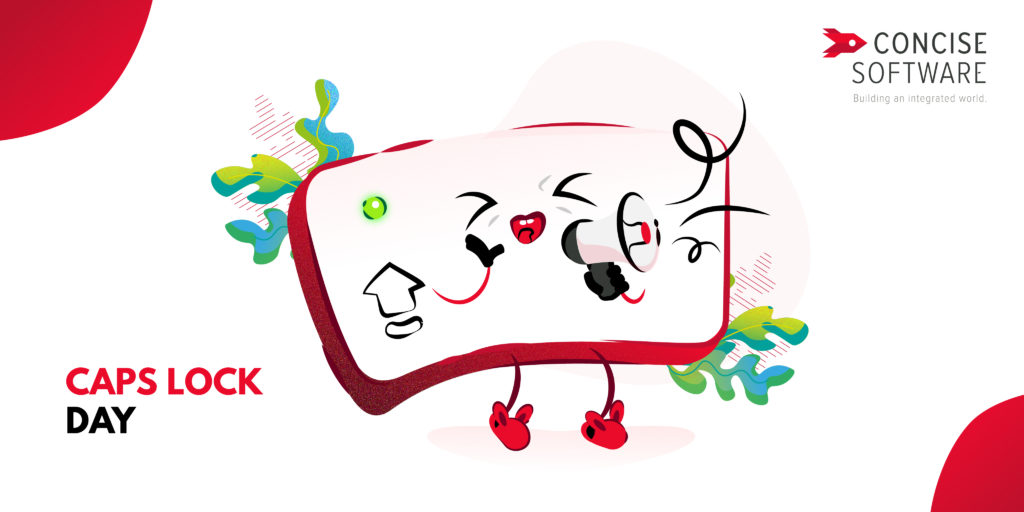
Long live Caps Lock! Today we celebrate its day
According to the so-called “netiquette”, writing messages with Caps Lock turned on is badly received: it is assumed that the user who uses capital letters in whole sentences simply… screams. Use Caps Lock carefully to avoid unnecessary misunderstandings.
Caps Lock, despite his “ungrateful” function, lived to see his holiday. 22 October is the day when it is said to be the “Day of Caps Lock”. Some Internet users celebrate this date writing everything in capital letters on that day. So don’t be surprised if you see on Facebook, Twitter, LinkedIn that someone you know wrote everything with Caps Lock turned on.
But what is Caps Lock really?
Caps Lock in the simplest sense is a button that activates permanent writing with capital letters (so-called hard shift). The word Its activation is very often signalled by the lighting of a diode on the keyboard and/or the appearance of a notification on the computer screen – in the program or directly in the operating system. Windows allows you to use a special option dedicated to the disabled: it replaces the functionality of this button with other, more accessible sequences.
Caps Lock refers to “capital letters” in English.
Internet users have been trying to “throw” the button out of computer keyboards for many years, especially in the period of netiquette formation. It was considered to be a more harmful than a mechanism used mainly by Internet trolls. In some Chrome OS devices on board the button disappeared and was replaced by the Google search key – but this approach to keyboard layout was not adopted outside the Google ecosystem.
Historically, Caps Lock was derived from the SHIFT button on the keyboard of the Remington No. 2 type-writer typewriter from 1878. In 1914 Remington Junior appeared with “SHIFT LOCK”, which permanently blocked the setting of capitals. The Datapoint 2200 was the first computer to use a similar solution (digital SHIFT LOCK button). IBM in the Model M keyboard for the first time placed it between TAB and SHIFT.
Caps Lock has never been so popular on Twitter: a small limit of characters to be used in a single message was quite an important support for uppercase writing. Some influencers very often used uppercase letters to communicate with their fans, which was an important recognition sign for them. Nowadays, this is being abandoned, believing that persistent writing in capital letters is simply rude.
In addition, typographers believe that sentences written entirely in capital letters are read worse, slower and more slowly than those in which the use of a standard layout is used. This is one of the reasons why today we decided not to write this text in capital letters – although there was such a plan. 😉
So it turns out that Caps Lock has been with us for 141 years! He may not be the most popular button on the computer keyboard, but it’s hard for him to refuse to have a huge impact on how we communicate on the Internet. There is nothing left for us to do but to wish him further successful years!
Read more: Today is Emoticon’s Day! It is worth to learn about their history